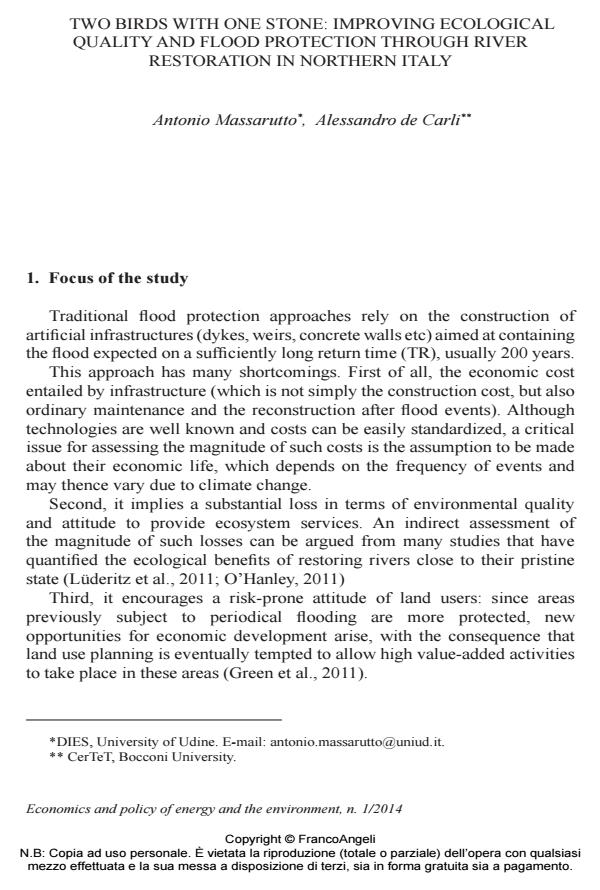Two birds with one stone: improving ecological quality and flood protection through river restoration in Northern Italy
Journal title ECONOMICS AND POLICY OF ENERGY AND THE ENVIRONMENT
Author/s Antonio Massarutto, Alessandro De Carli
Publishing Year 2014 Issue 2014/1
Language English Pages 29 P. 93-121 File size 403 KB
DOI 10.3280/EFE2014-001005
DOI is like a bar code for intellectual property: to have more infomation
click here
Below, you can see the article first page
If you want to buy this article in PDF format, you can do it, following the instructions to buy download credits

FrancoAngeli is member of Publishers International Linking Association, Inc (PILA), a not-for-profit association which run the CrossRef service enabling links to and from online scholarly content.
This paper outlines the results a multi-criteria evaluation study applied to the integrated assessment of flood protection options in Northern Italy. The study aims at comparing advantages and disadvantage of a more traditional approach based on hard infrastructure calibrated on the event with a return time of 200 years (TR200) with a more innovative approach based on a combination of non-structural measures, controlled flooding of lower-value areas and mitigation. These are now standard in Northern Europe and elsewhere; however their feasibility has never been investigated in the Italian context. Despite the study is still at a pioneering level, it authorizes some optimistic evaluation about the desirability of non-structural remedies in Italy. The study argues about the necessity of complementary measures, especially based on compensative payments for ecosystem services, in order to improve social acceptance for such practices.
Keywords: Flood protection, non-structural measures, economic environmental policy instruments, river restoration, multi-criteria analysis
Jel codes: Q25, Q54, R52, Q15
- AGRIDE-c, a conceptual model for the estimation of flood damage to crops: development and implementation Daniela Molinari, Anna Rita Scorzini, Alice Gallazzi, Francesco Ballio, in Natural Hazards and Earth System Sciences /2019 pp.2565
DOI: 10.5194/nhess-19-2565-2019
Antonio Massarutto, Alessandro De Carli, Two birds with one stone: improving ecological quality and flood protection through river restoration in Northern Italy in "ECONOMICS AND POLICY OF ENERGY AND THE ENVIRONMENT" 1/2014, pp 93-121, DOI: 10.3280/EFE2014-001005